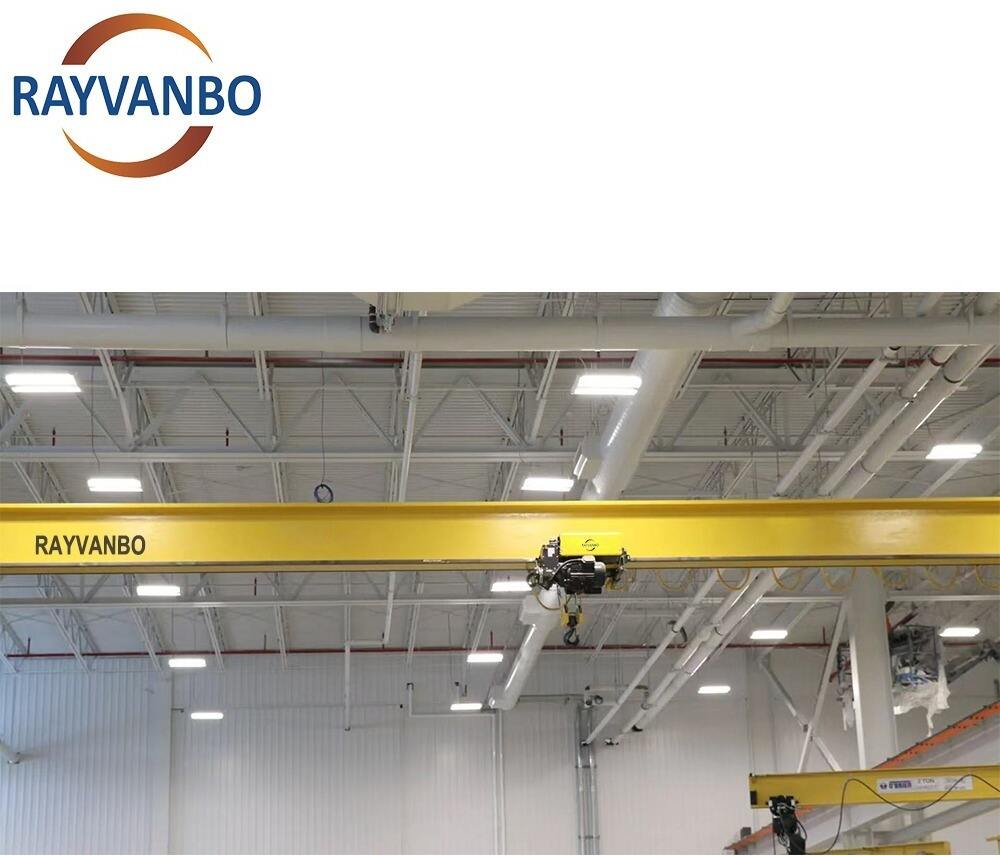Overhead cranes are lifting equipment that spans tracks above factory buildings or warehouses. Their structure is designed around "lateral crossing and precise lifting," and is comprised of five key components that work together to achieve stable transport of heavy objects in three-dimensional space.

Metal Structure
This forms the load-bearing framework of the entire machine, with the main beam and end carriages at its core. The main beam is mostly a box-type or truss structure, welded from high-strength steel plates, spanning the tracks on both sides of the factory building and requiring strong bending and torsional resistance. The end carriages connect the two ends of the main beam, with trolley wheels at the bottom that fit with the tracks on the factory building columns. Some main beams also have trolley tracks underneath to support the trolley's movement. The stability of the metal structure directly determines the rated lifting capacity of the equipment.
Lifting System
This system is responsible for the vertical lifting of heavy objects and consists of a hook assembly, wire rope, drum, lifting motor, and reducer. The hook assembly is made of alloy forging and equipped with an anti-disengagement device; the wire rope is multi-layered, wear-resistant, and wound on a drum; the hoisting motor drives the drum to rotate via a reducer, realizing the winding and unwinding of the wire rope. It is also equipped with an electromagnetic brake that locks upon power failure to prevent the load from falling, adapting to the lifting needs of goods of varying weights.
Trolley Travel System
This system drives the hoisting system laterally and is located on a track below the main beam. It consists of a trolley frame, trolley wheels, a trolley motor, and a reducer. The trolley motor drives the wheels along the main beam track via a transmission mechanism, achieving a movement accuracy of ±5mm. This works in conjunction with the hoisting system to achieve precise lateral alignment of the load. Some trolleys are also equipped with buffers to prevent collisions with the end carriages.
Main Trolley Travel System
This system drives the entire machine longitudinally along the factory building track and is installed at both ends of the end carriages. The crane consists of wheels, axles, a crane motor, and braking system. The crane motor drives the wheels to rotate via a reducer, allowing the equipment to move longitudinally along tracks on both sides of the plant, expanding the operational coverage area. It is typically designed in a "separate drive" mode to ensure smooth operation and adapt to long-distance transport needs.
Electrical control system
The "brain" of the equipment, includes a control cabinet, an operator's cab (or remote control), and limit switches. The control cabinet integrates frequency converters and contactors to regulate the operating speed of each motor; the operator's cab is equipped with an operator's panel or uses a wireless remote control to achieve coordinated control of the lifting, trolley, and crane movements; limit switches (lifting height and travel limit) automatically cut off power to prevent overtravel and ensure operational safety.
 Hot News
Hot News2025-12-19
2025-12-19
2025-12-12
2025-12-12
2025-12-05
2025-12-05